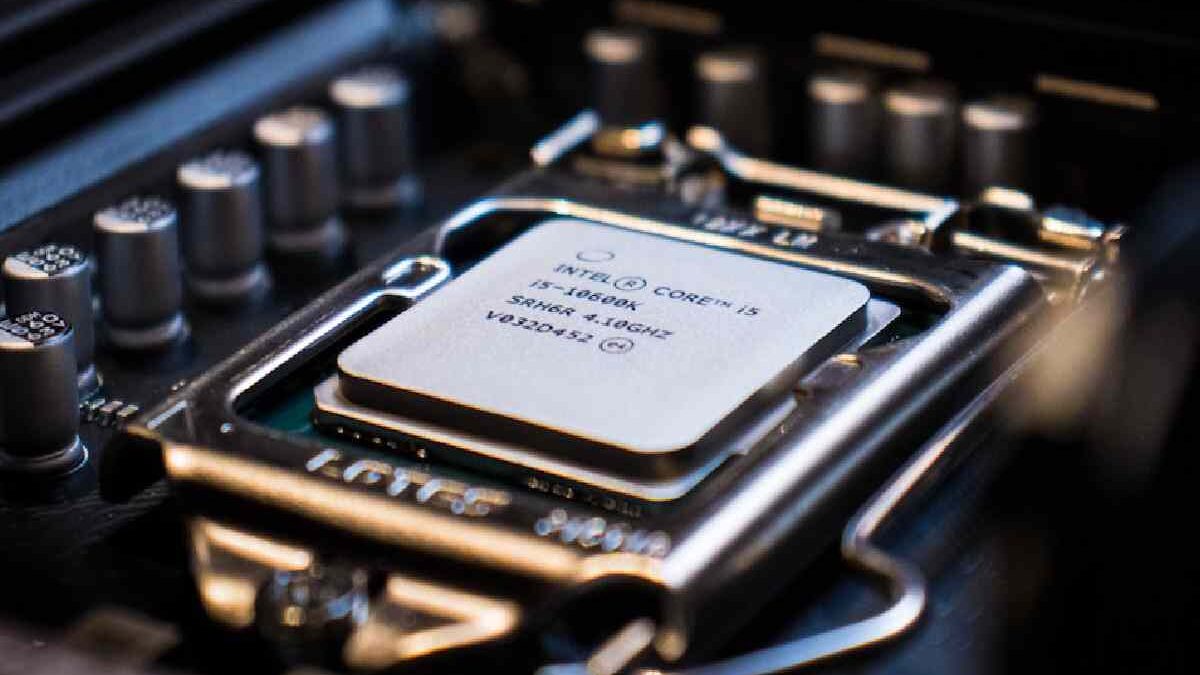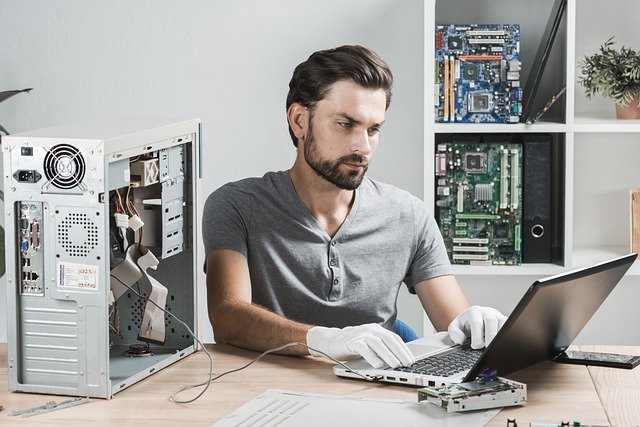Table of Contents
CPU – The Computer
CPU – The central processing unit of a computer is a piece of hardware that carries out the instructions of a computer program. It performs the basic arithmetical, logical, and input/output operations of a computer system. … The CPU is the central processor unit or processor for short.
Every single computing device has a CPU.
You may have caught this tech period previously, but what is it precisely? What is a CPU, and how prepares it work?
In this beginner-friendly article, you’ll learn the fundamentals of a CPU, and I’ll give you an overview of how it works.
The central processing unit (CPU), a principal part of any digital computer system, generally comprises the main memory, control unit, and arithmetic-logic unit.
What is a CPU, and anywhere do you find it in a supercomputer?
CPU is short for Central Processing Unit. It is also known as a computer or microprocessor.
It’s one of the essential pieces of hardware in any digital computing organization – if not a tremendous significance.
Inside a CPU, there are thousands of tiny transistors, tiny switches that control the flow of electricity through the combined circuits.
You’ll find the CPU located on a computer’s motherboard.
A computer’s motherboard is the primary journey board inside a processer. Its job is to attach all hardware components.
Often referred to as the brain and emotion of all digital organizations, a CPU is responsible for doing all the work. It performs every single act a computer does and affects programs.
Computer Programs and where are they Stored
There is a program for everything a CPU does.
Whatever it may be, there is a package for all computer events.
Programs are essential to perform in sequential, logical order and step-by-step.
They are written in a human-readable philological – a software design philological – by a programmer.
Computers don’t understand programming tongues directly, so they need to to a more accessible understood form.
That form machine philological or binary.
Binary is a base two numerical system of only two numbers: 0 and 1.
This reflects and ties in nicely with the only two possible states transistors have to regulate the ebb and flow of power – either on (1) or off (0).
So, under the hood, programs are stowed as orders of bits. Bits are another name for binary digits. Programs are permanently stored and long term in a storage device, whether it’s or SSD.
These are non-volatile types of memory, sense they store data even when the power is off.
While a program, all of its data is in the main, primary, memory or RAM.
This type of recollection is volatile, and all data is lost when the power shuts off.
A CPU Does
In a nutshell, a CPU is accountable for processing logical and mathematical operations and executing instructions.
It can perform millions of orders per second – but can carry out only one instruction at a time.
It first receives some input, typically from an input device.
Then the CPU is in Charge of Four Tasks
. It looks for the address of the related education and forwards the request to the RAM.
Decoding or interpreting the instructions into a form the CPU can recognize, machine language (binary). This reading is from memory. The CPU and RAM constantly work together.
We are executing and carrying out the given instructions.
It stores the execution result back to memory for later retrieval if and when requested. This is also writing to memory.
Finally, there is an output, such as production approximately to the screen.
The process defined above is called the fetch-execute cycle and happens many times per additional.
The Main Parts of a CPU
Now you know the specific responsibilities a CPU achieves for every process on a computer. What are the shares of the CPU that help get that work done?
Below are some of the essential apparatuses inside it:
CU (short for Control Unit). It orders the flow of input and production. The part fetches and retrieves the instructions from the main memory and later decodes them.
ALU. The part where all the processing happens. Here is where all mathematic calculations take place, such as addition, subtraction, multiplication, division, and all the logical operations for decision-making, such as comparing data.
Registers. A speedy memory location. The data and instructions currently being processed during the fetch-execute cycle are stored there for quick access by the processor.
The Function of CPU
The primary function of the CPU in the computer is to supply and process by performing all the mathematical and logical calculations with the input data to provide the output data to the users, thereby working on the computer.
The Function of CPU in 4 Steps
The CPU receives the data once the computer efforts the data complete input devices such as a console or mouse. And then CPU provides the treated data through output devices such as on the screen.
The CPU also stores the method data in a cache for future use.
Since creation and development, development of the CPU, Fetch, Interpret and Execute are the fundamental functions of the CPU. Let us know the process of each of them in detail.
Decoding
Once the instruction into the CPU, it needs to work out its income. After which, the process of decode begins with the help of ALU (Arithmetic Logic Unit).
It performs logical and arithmetic processes and necessary calculations, which achieves the computer’s various apparatuses; it reads and interprets instructions from memory and transforms them into a series of signal forms that are then passed to different parts of the CPU to further action be taken.
Executing
At last, decoded instructions. Finally, the computer must carry out the instruction during the execution step. This could be many things, including packing data from recollection, storing data in memory, or performing a calculation.
After which, they are stored in the register as output so later instructions can reference them.
After this, as per the user’s instructions, it is stored on the computer system or secondary storage devices.
The processor will carry out this cycle over and over millions of times per second. This is how the works.
Conclusion
Since creation and development, improvement of the, Fetch, Decode and Execute are the fundamental functions of the Let us know the part of each of them in detail.
So, the processor is responsible for executing all the processes in this way. That’s why, without a central processing unit, computers and laptops would not be able to do anything with the data they store.
Because the CPU must continue to operate continuously, causing much load is on the, it often heats up.
To avoid this heat, cooling on the CPU. The heat sinks with fan-based thermal paste; it is a heat conductive paste so that the processor continues its work correctly.
The CPU has the most role in it when it comes to devising speed and high performance. Suppose you want a fast computer for performing 3D animation, editing video files, intense gaming, etc. It is imperative to have a quick and efficient processor in this case.
Therefore, whatever technological advances have in processor technology, speed has been the most important reason.


